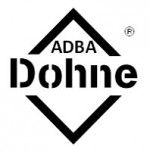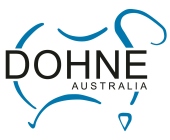Breed switch for improved lambs
By KATE PEARCE / STOCK & LAND / 27th August 2015
A SIXTY-YEAR family focus has shifted from breeding purebred Merinos to a Dohne/Merino crossbreeding operation at Garah, NSW.Jock and Maryan Hunter run the
4000-hectare grazing and cropping property, Box Hill.
The operation includes 3800 ewes, including Merino and Dohne/Merino, all of which are joined to Dohnes.Their daughter, Alison, runs the livestock side of the business, while her brother David handles the cropping.This includes chickpeas, faba beans, oats, wheat and summer crops.
Mr Hunter said the introduction of Dohnes into the flock came about because they had wanted a bigger ewe without losing the wool quality. “The wool quality is still really good,” he said.“The main advantage of the cross is to get into the lamb market.“As we are getting more Dohne blood into the lambs they are doing better in the market.”
Photo courtesy of Fairfax Agricultural Media
Phillip Fleming, Boyanga South, Moree, NSW who helps out the Hunters from time to time, employee Mark Stewart, Garah, and Livestock Agent, Rob Martin, North West Real and Livestock, Moree, NSW checking 11-12 month old, Dohne/Merino cross lambs on the Hunter family’s Garah property.
The Hunters source their rams from Graham Coddington, Roseville Park Dohnes, Yeoval, NSW. Mr Hunter said with Mr Coddington being a Merino and Dohne man it worked well. When first looking into crossbreeding his Raby-blood Merinos, Mr Hunter was looking for a good bloodline and knowledge base.“Given the lamb market was doing better than the wool market for some time, it was time to change,” he said.
They join about 2800 ewes in March for two months and after the rams are pulled out they scan for twins, singles and drys. “We have only started scanning in the past couple of years,” Mr Hunter said. They have had 100 per cent lambing for the past three years. Shearing takes place in late July. At Box Hill they used to shear in January, but with wet summers and flooding on the property it became too hard to manage. The change in shearing has also meant the sheep don’t have a full back of wool at the hottest time of year. Mr Hunter said the wool was now finer than it used to be and the colour was also better. “(The wool) might have lost a bit of weight, but it’s every bit as good as it was before, if not better,” he said. “Being able to keep the quality of our Merino wool has been an important part of crossbreeding – I honestly expected to lose it.”
The Box Hill flock produces a 19-micron fleece. Shearing in the winter has meant the fleece is much cleaner and free from clover burr, which was a problem in the summer. The Hunters market their wool to Goddard Wool Marketing, Inverell, NSW, and Mr Coddington does their classing, culling about 30pc of ewes each year. Out of each ewe lamb drop, about 25pc is kept as replacements, with surplus to necessity stock sold to breeders. Last year’s lamb drop, and this year’s to date have averaged about the $150 mark but only a third of this year’s drop had been sold the most recent line having gone to Fletchers, Dubbo, NSW. Mr Hunter said the other two thirds was still being finished.
The wethers were also mainly sold to Fletchers and Country Fresh, Tamworth, NSW. “They must be what the buyers want because they never make any comments about them being too fat,” Mr Hunter said. They had about 1400 wethers to sell this year and so far have trucked out 800 head weighing at an average of 55 kilograms liveweight. When it came to culling cast for age ewes, Mr Hunter said the number culled depended on the size of the fl ock at the time. If they were low he would keep ewes to rising seven years old, but most went at fi ve or six years old. Oats are grown to finish sheep and cattle, with some forage sorghum planted last summer for the first time. Mr Hunter said their crossbreds were bigger than the Merinos, heavier muscled and “hitting that weight and range of 55kg at 10 to11 months-old”.
Photo courtesy of Fairfax Agricultural Media
Livestock Agent, Rob Martin, North West Real Estate & Livestock, Moree, NSW, drafting 11-12 month old, Dohne/Merino cross lambs, dw 28kg on the Hunter family’s Garah, NSW, property Needlewood.
Jock and Maryan Hunter run 3800 ewes which are joined with Dohnes in an effort to get bigger ewes without losing wool quality.













